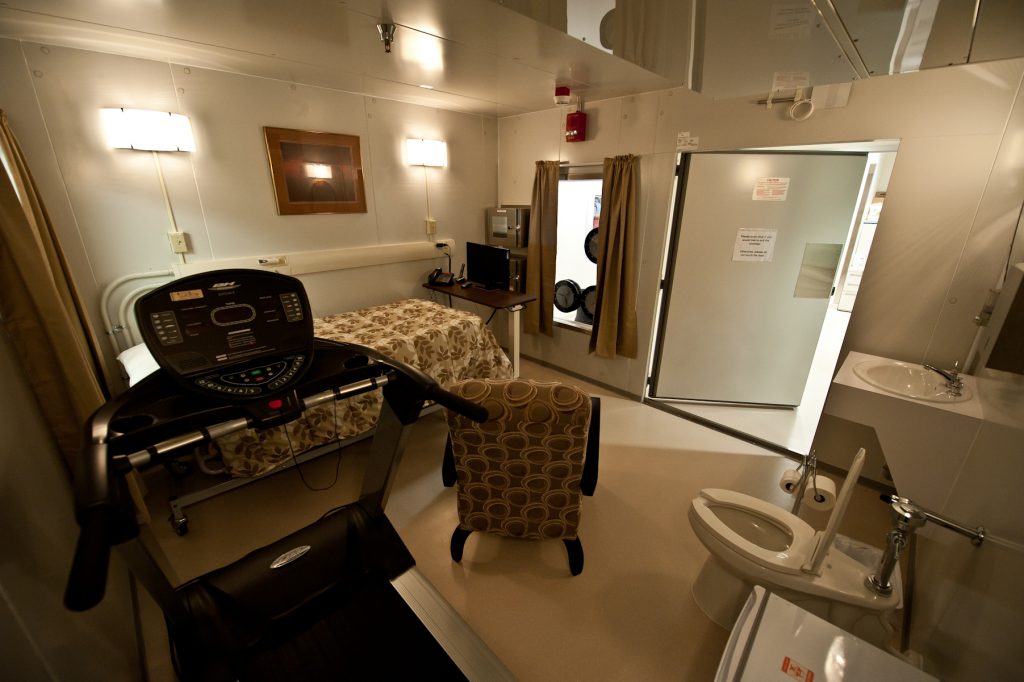Measuring the amount of calories a person burns allows for a precise estimate of the total number of calories they need to lose, maintain, or gain weight. Energy balance, or the total number of calories consumed versus expended is fundamental in maintaining a healthy body weight. It is also important to understand how certain diseases can effect energy metabolism, and thus the number of calories a person requires to prevent undesired changes in weight. Cancer and chronic obstructive pulmonary disease are examples of diseases that increase metabolic rate, and place individuals at risk for weight loss and muscle wasting and their negative impacts on health outcomes.
Whole Body Calorimetry Unit
The whole body calorimetry unit (WBCU) is a a sophisticated research suite where a complete assessment of an individuals energy balance (calories in versus calories expended) is performed using indirect calorimetry. The WBCU at the HNRU is one of two units in Canada and less than twenty in the world. It is the most precise way of study energy metabolism, and provides information regarding the number of calories burned:
- At rest
- During sleep
- During activity
- While food is being digested
The amount of time a person spends in the WBCU can range from one hour to 24 hours depending on the goals of the research study. Research applications with this unit are extensive, and could include energy metabolism studies on individuals such as:
- Teenagers
- Athletes
- Seniors
- Individuals with medical conditions (cancer, diabetes)
The WBCU could also be used to determine the effect of substances such as medications, vitamins, minerals, and specific food or beverages on human metabolism.

Other Techniques
Metabolic Cart
The HNRU also has a a Vmax Encore 29n metabolic cart for measuring resting metabolic rate. This device measures the amount of oxygen consumed and carbon dioxide exhaled in order to calculate the number of calories burned at rest. A test with this device involves the placement of a ventilated hood over a subject's head while they are laying in a resting position. This test takes approximately 30 minutes.
